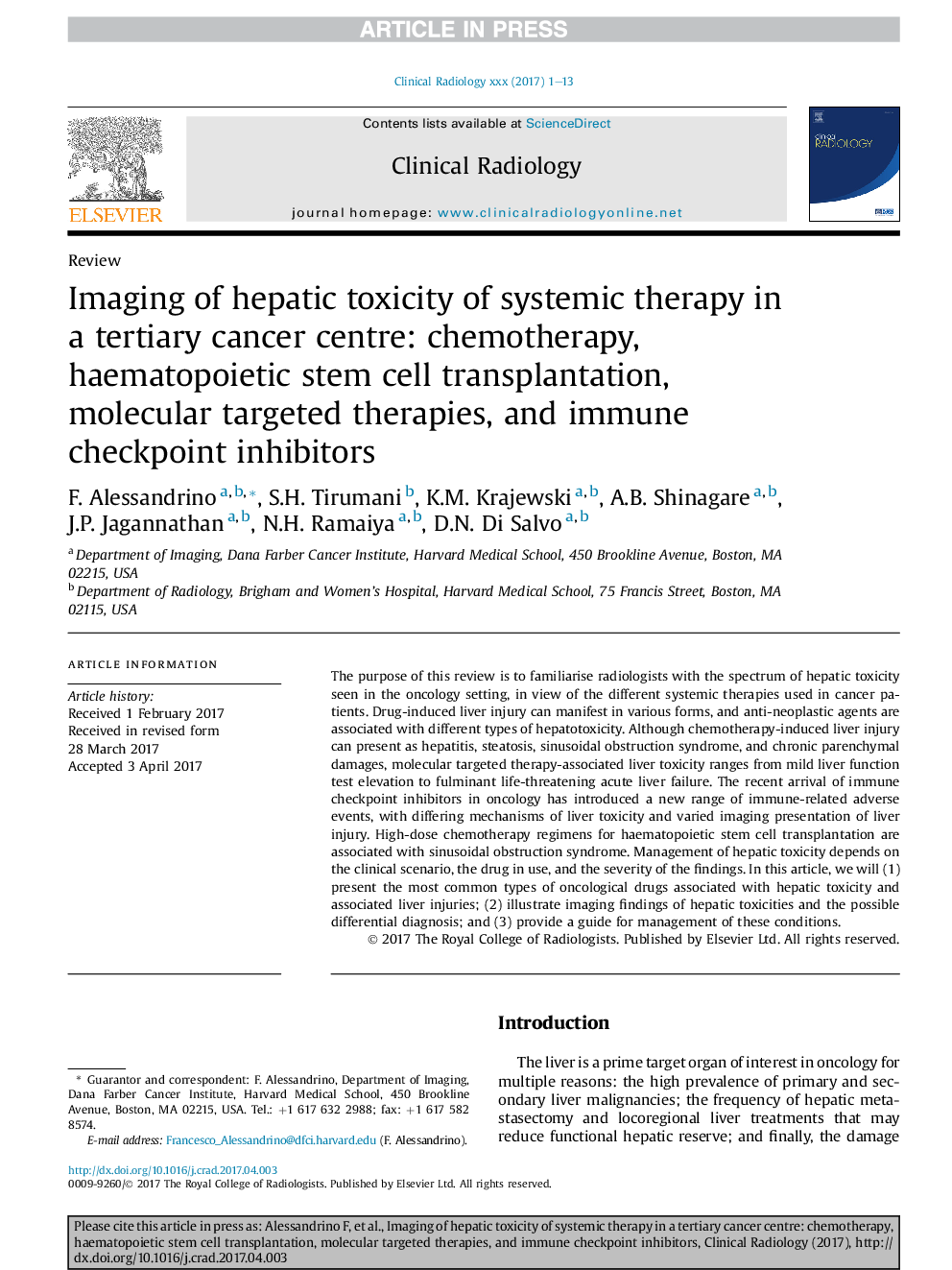| Article ID | Journal | Published Year | Pages | File Type |
|---|---|---|---|---|
| 5700387 | Clinical Radiology | 2017 | 13 Pages |
Abstract
The purpose of this review is to familiarise radiologists with the spectrum of hepatic toxicity seen in the oncology setting, in view of the different systemic therapies used in cancer patients. Drug-induced liver injury can manifest in various forms, and anti-neoplastic agents are associated with different types of hepatotoxicity. Although chemotherapy-induced liver injury can present as hepatitis, steatosis, sinusoidal obstruction syndrome, and chronic parenchymal damages, molecular targeted therapy-associated liver toxicity ranges from mild liver function test elevation to fulminant life-threatening acute liver failure. The recent arrival of immune checkpoint inhibitors in oncology has introduced a new range of immune-related adverse events, with differing mechanisms of liver toxicity and varied imaging presentation of liver injury. High-dose chemotherapy regimens for haematopoietic stem cell transplantation are associated with sinusoidal obstruction syndrome. Management of hepatic toxicity depends on the clinical scenario, the drug in use, and the severity of the findings. In this article, we will (1) present the most common types of oncological drugs associated with hepatic toxicity and associated liver injuries; (2) illustrate imaging findings of hepatic toxicities and the possible differential diagnosis; and (3) provide a guide for management of these conditions.
Related Topics
Health Sciences
Medicine and Dentistry
Oncology
Authors
F. Alessandrino, S.H. Tirumani, K.M. Krajewski, A.B. Shinagare, J.P. Jagannathan, N.H. Ramaiya, D.N. Di Salvo,
